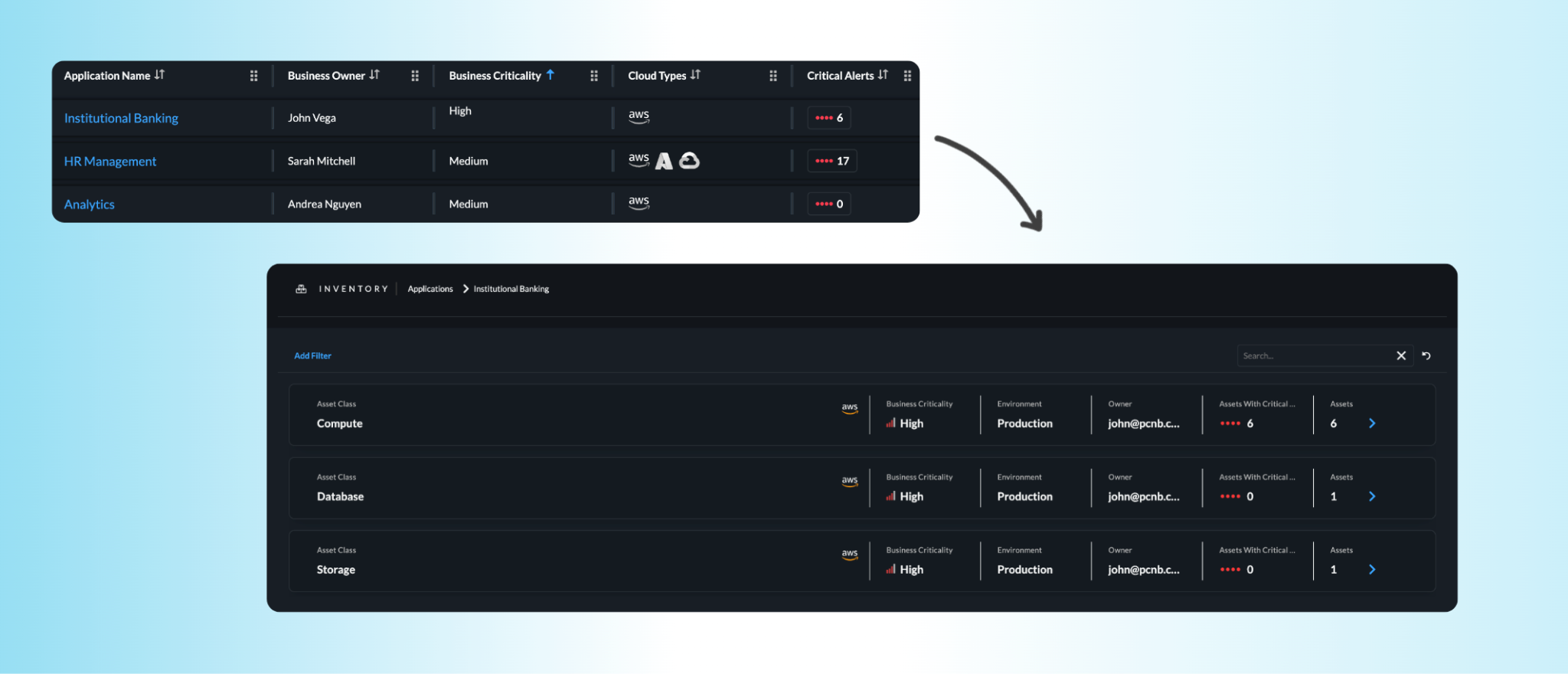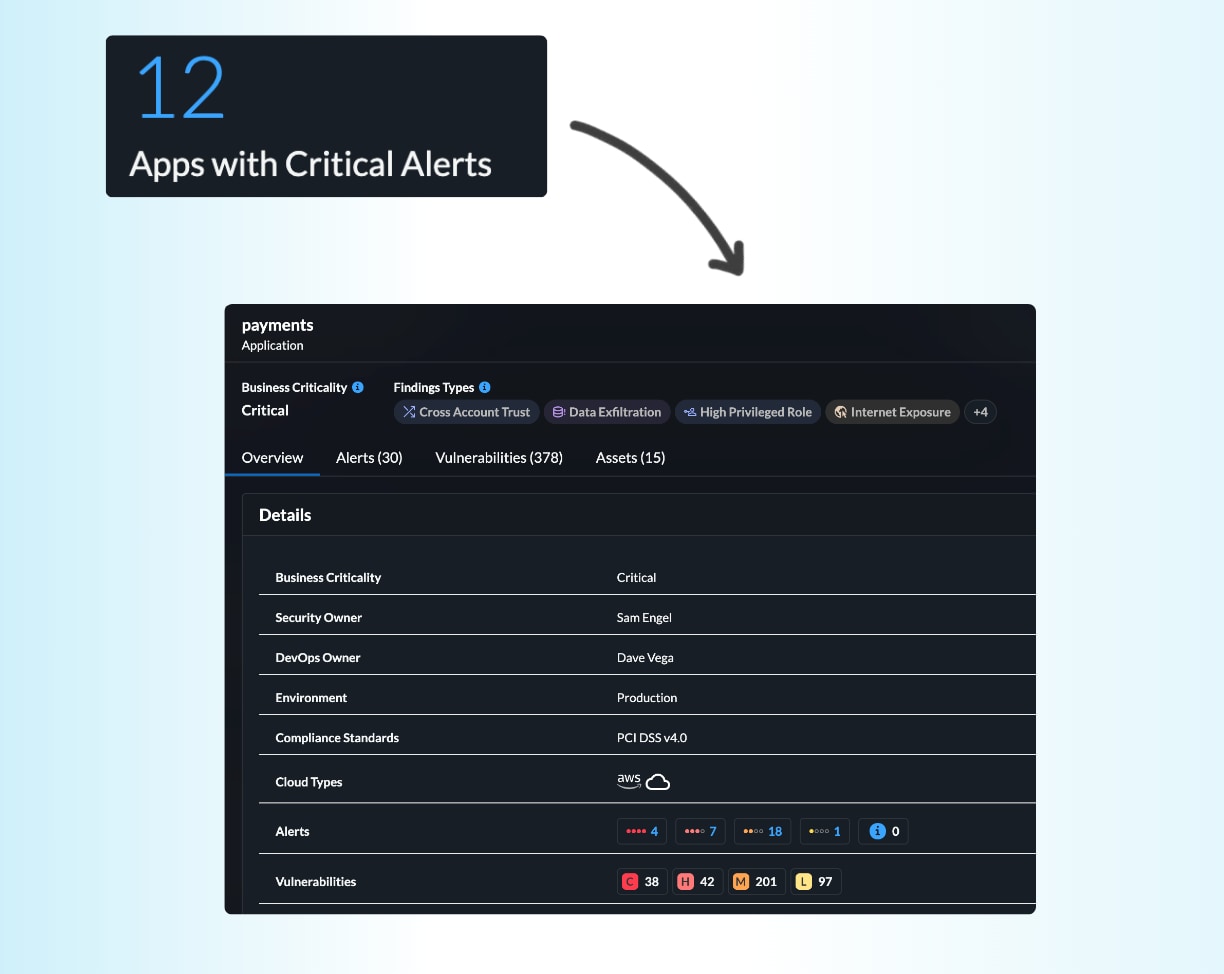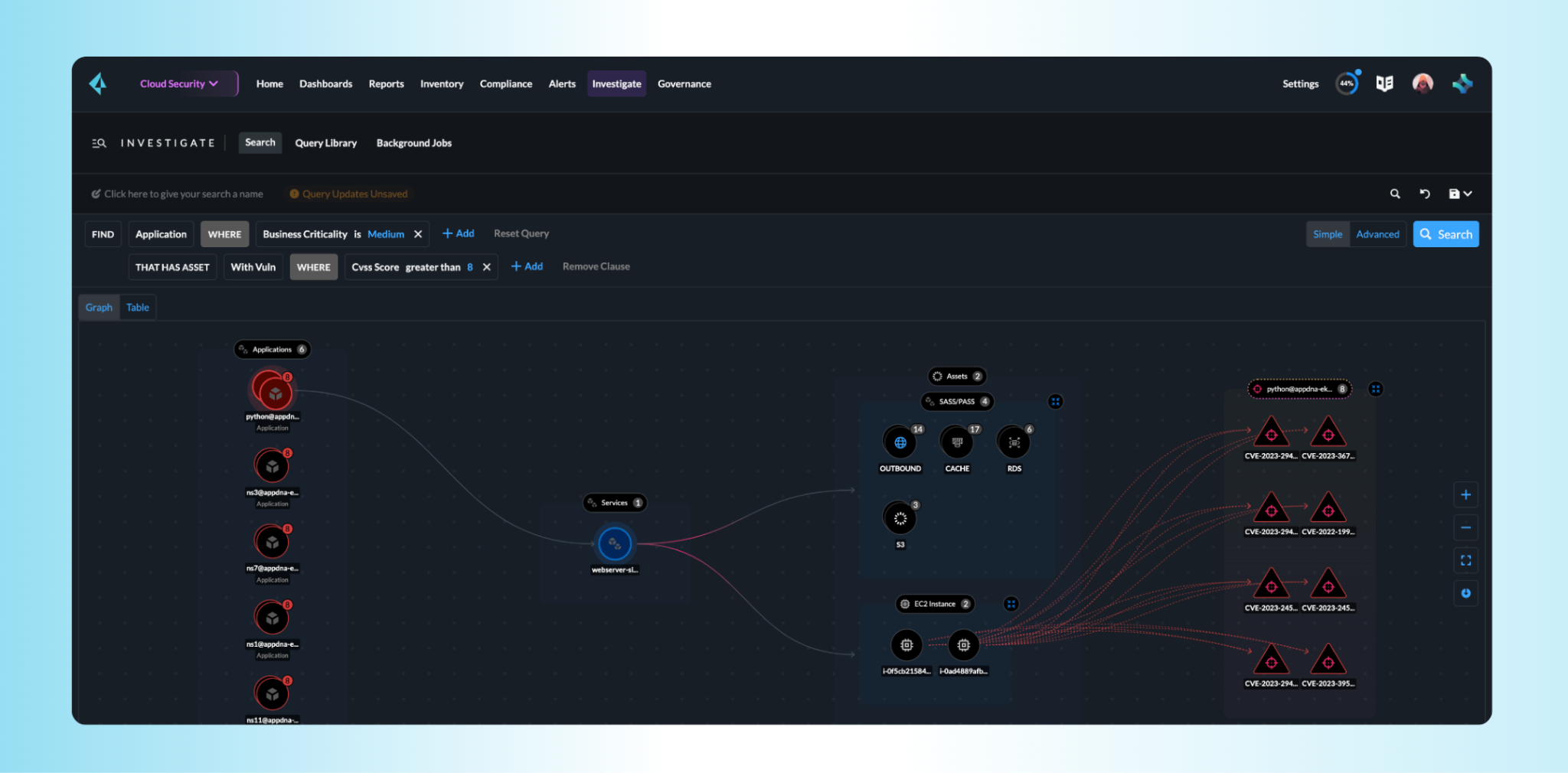In complex cloud-native environments, security teams must protect an increasing number of applications. Limited resources make prioritizing and contextualizing cloud security risks challenging, especially when aligning them with the appropriate applications.
Compounding the problem, teams often lack insight into the applications they must protect, leading to poor outcomes.
- Poor visibility: No one understands what applications exist in the cloud, which cloud assets are critical to the business and who owns them.
- Prioritization challenges: As security teams review alerts, they struggle to identify which risks impact critical applications more than other applications.
- Prolonged analysis: The process of gathering, analyzing and reporting risk impact (e.g., zero-day assessments) of applications can take several days.
“Cloud-native applications are a complex set of relationships between containers, VMs, serverless functions, storage and platform services. Understanding how these work together as an application, and mapping to application risk is a challenge.” - Gartner
The market has attempted to address the challenges. Some tools provide a limited view of the application landscape, but this forces security teams to manually tag resources to map assets to applications. The time-consuming and error-prone approach neglects valuable data from cloud configurations, permissions and live traffic — all of which should factor into accurate app classification.
In the end, cloud security teams face the same dilemma. How do they effectively secure applications without context?
Securing the Cloud with App Context
Palo Alto Networks designed Prisma Cloud with AppDNA, a capability that equips security teams with visibility to the applications they secure in the cloud with its business context. AppDNA provides security teams with application-centric visibility, helping them lower overhead as they investigate, prioritize and remediate risk. Let’s unpack what AppDNA is and how it helps organizations.
Application-Centric Visibility
Discovering and Grouping Assets
AppDNA auto-discovers applications and intelligently determines the application boundary. It then groups associated assets under each application, offering organizations a clear view of their assets and enabling teams to understand components in the context of their broader applications.
Application Classification
If you’re responsible for securing applications across clouds, then you should be able to answer questions such as:
- What applications exist in my clouds?
- Which of my applications are critical to the business?
- Who owns each application?
- What cloud components make up each application?
Prisma Cloud helps you answer these questions with AppDNA. Most agentless scanners provide an inventory of IaaS and PaaS resources. These providers only extend the inventory view to support user-created simple asset grouping. With AppDNA, Prisma Cloud automatically creates the application boundary with the cloud assets and their related resources, providing you with complete visibility and overlaying it with application context, including business criticality, owners and more.

Risk Remediation with Application Context
App-Based Alert Prioritization
A critical alert doesn’t necessarily indicate a major business impact. For instance, a critical alert on an internal analytics tool might be treated as medium priority while the same alert on a highly sensitive application would be of utmost importance. AppDNA provides the application context, allowing organizations to prioritize alerts based on risk severity levels and the criticality of the application affected. Not only does this help security teams to prioritize risks, but it also equips them with the context to discuss risk remediation steps.
Accelerated Risk Remediation

AppDNA enables you to quickly contact the right owner for alert resolution, eliminating the need for security teams to parse through additional tools, such as a configuration management database (CMDB), to identify cloud assets and owners. For organizations that don't enforce automated remediation, AppDNA streamlines the process of handing off prioritized issues to the teams responsible for resolving misconfigurations, which could be developers and cloud operators. By providing this direct line of communication and clear ownership identification, AppDNA significantly enhances the efficiency of security issue resolution in cloud environments.
Contextual Investigation
Quick Queries for Immediate Insights
Critical vulnerabilities require rapid response. AppDNA's search and investigate feature allows organizations to quickly query their environment. Whether identifying applications affected by a specific vulnerability or searching for assets with certain configurations, AppDNA provides fast insights, correlating the cloud resources that form your applications.
Faster Risk Analysis
When a zero-day vulnerability emerges, the process of analyzing and reporting the impact to stakeholders can take several days if you don't have application context. With Prisma Cloud, you can define searches based on application context, rather than individual assets. Even more, you can incorporate vulnerability context to speed up investigations.

Unlock the Power of Application Context with AppDNA
Examining an alert in isolation of its connection to the system is like studying a puzzle piece without regard for the puzzle and how the piece fits into the big picture. AppDNA transforms cloud security by automatically discovering, cataloging and contextualizing applications along with their associated assets. It empowers teams with a deeper understanding of their risks, enabling them to implement optimal remediation measures. Prisma Cloud's AppDNA allows organizations to address risks according to their unique needs.
If you’re ready to see AppDNA in action, book a demo with one of our experts.